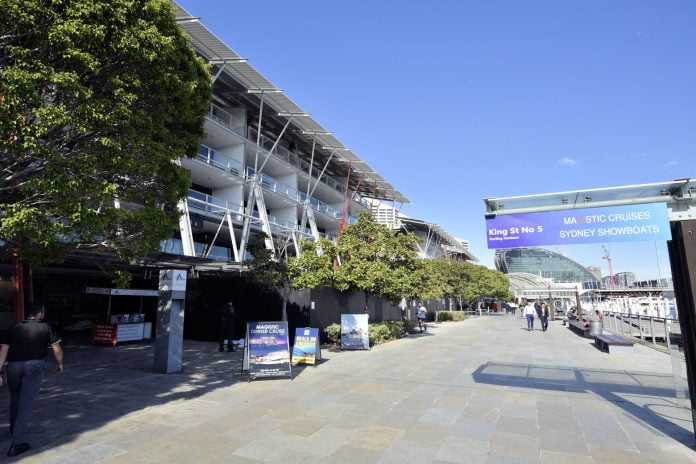Micron Integrates Inner Range – Security Integrator Micron Group has completed a complex electronic security integration for King Street Wharf in Sydney that incorporates Inner Range Integriti access control and automation, along with Milestone XProtect VMS supporting 211 Avigilon CCTV cameras, all backed up by ION UPS.
Micron Group’s integration of CCTV and access control at King Street Wharf is a high quality solution that wrangles an unusually complex built environment incorporating 4 commercial and 4 residential buildings separated by a busy street at one of Sydney’s premier harbourside locations.
The commercial side overlooks King St Wharf and backs onto Lime Street, while the residential side is across Lime Street and bounded by Shelley St to the East. The residential towers range in height from 8 to 14 stories, with 155 residential apartments in the North Tower, 107 residential apartments in the South Tower, 95 residential apartments in 45-49 Shelley Street and 114 Serviced Apartments at the Medina next door. Meanwhile, the commercial waterfront between Lime Street and Darling Harbour consists of 85 commercial suites with a retail area underneath containing 11 restaurants, the largest of which seats 450.
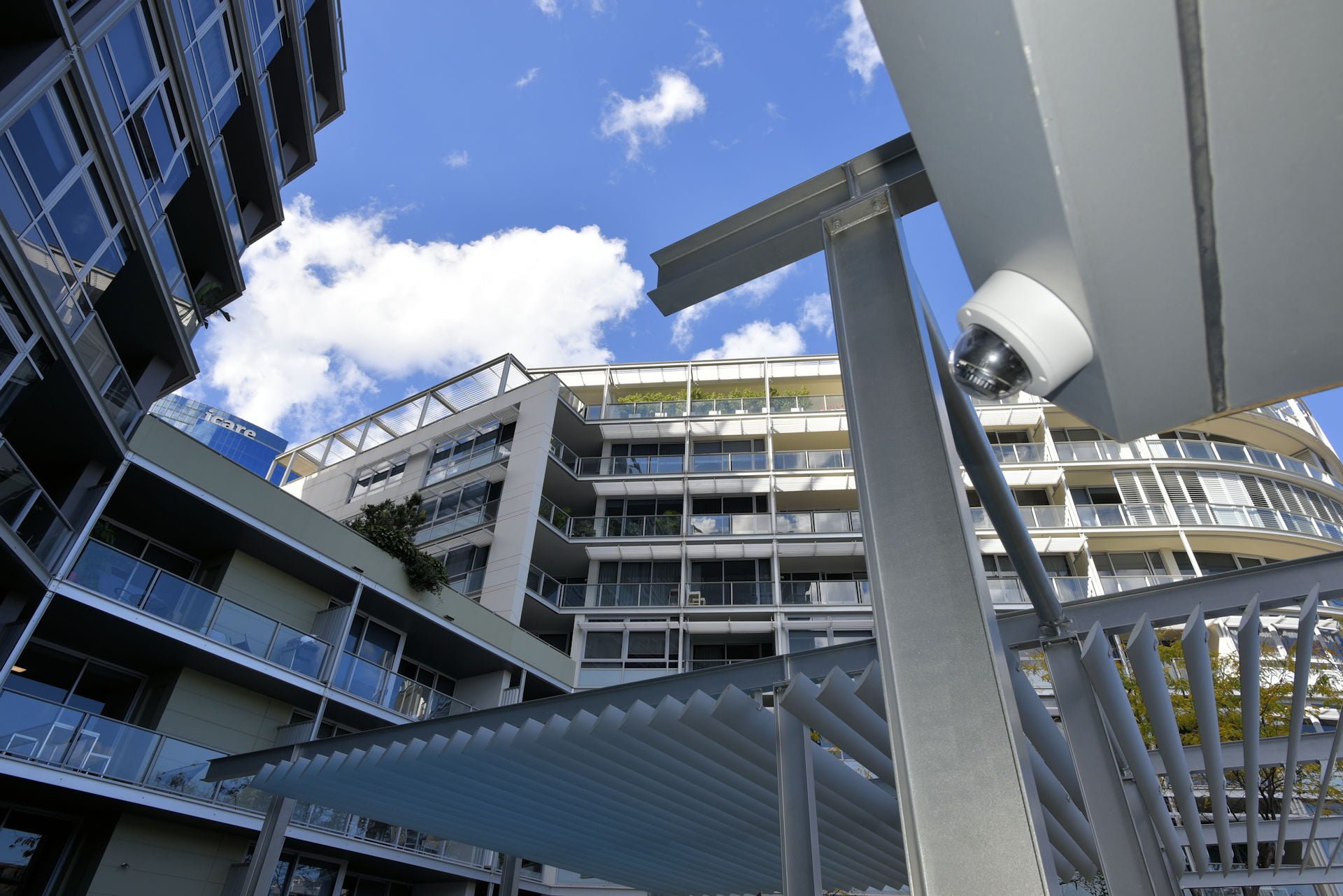
You have to walk the ground to get a proper sense of the operational and installation complexities of this disparate precinct. Physically linking the buildings is an underground carpark, which lies beneath and connects both sites in multifarious ways. Moving around and between the King Street Wharf commercial and residential buildings has its labyrinthine moments. The underground areas feature the sort of variable lighting that severely tests CCTV cameras, as well as incorporating multiple access-controlled building service rooms.
Something that adds to the complexity of this installation is the diversity of interest groups. There are management teams and security teams taking care of day-to-day operations. Each team answers to a management team guiding the overall business. But while the buildings are managed as one, they have separate owners and separate strata titles. All this means that a key element of the integration was establishing the requirements and pain points of the various stakeholders and ensuring that, as far as possible, everyone got what they needed.
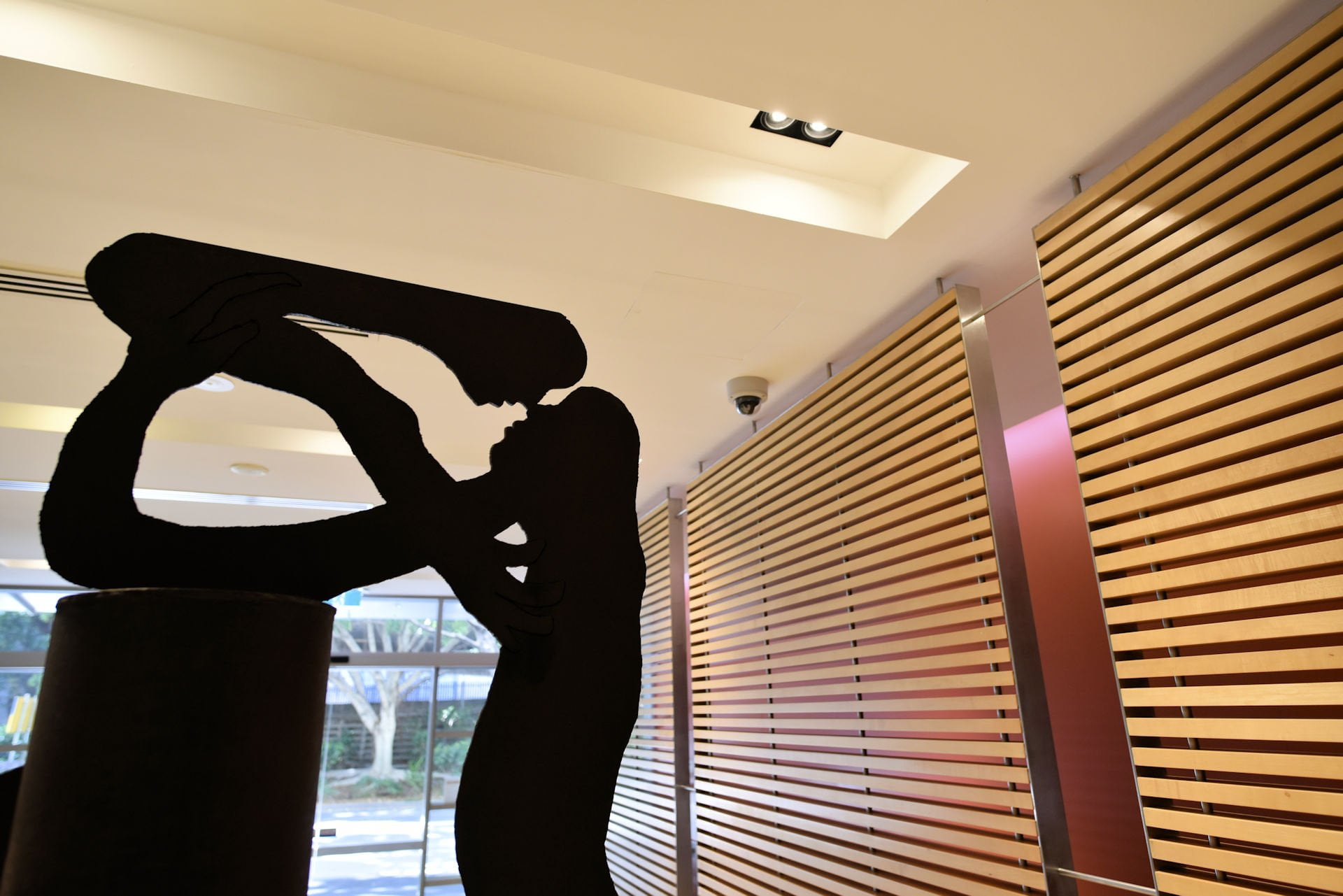
Ultimately the key for site management was the ability to manage the sites as securely and as easily as possible from a single security workstation, with secondary access for the facilities management team. Also important was the creation of comprehensive event reports supported by CCTV footage, LPR at the main carpark entry and exit, and the ability to deliver security and management teams situational awareness of the entire site, including views of the external spaces around the buildings.
As Sydney CBD’s only Gold-level Milestone partner, and with considerable security integration experience across a 23-year history, including high-rise work, the 30—plus Micron Group team was well placed to handle the task. I meet the team at its nearby office, then walk the site with Micron Group’s Antony Lyon. My impressions from the start are that this is a highly professional crew and the work they’ve done at KSW certainly bears that out.
In terms of system design, National Security Consulting was engaged by the then strata managers, Strata Choice to assess and report on the failing analogue CCTV, the DSX access control system and the various intercom systems across the site back in 2018.
“I recommended total replacement both systems,” explains consultant, Paul Charles. “The owners committee further engaged me to undertake a full design of both systems and provide technical and installation specs. Along with the 40 analogue cameras to be replaced, an additional 178 cameras were added to the system. The CCTV was specified as Avigilon or Geutebruck with Axis cameras and the EACS was to be Integriti.
“The designs were finalised, and the project went to tender in May 2019. The tender was assessed, and recommendations made to the owners. The project was then delayed by the committee for various reasons. During this time, Micron was asked to submit a tender by the facilities manager. They submitted an alternate CCTV solution with Avigilon Cameras and Milestone head end and a compliant Integrity solution. This alternate tender was ultimately accepted by the owners, Micron undertook the project, and I was engaged to witness test the system in October 2020.”
Micron Integrates Inner Range, Milestone, Avigilon – The KSW System
It’s always tempting to rush straight into a case study like this one but let’s take a moment to run through the system components first. Cabling is the core of any security integration, and this site is no different. Built in 2000, KSW still had an analogue CCTV system – this meant IP camera cabling needed to be undertaken from scratch. But when it came to the access control system, much of the existing infrastructure was retained.
The security system is built around an optical fibre backbone, linking 9 remote CCTV cabinets, as well as the Inner Range Integriti control panels integrated with them. It’s a comprehensive installation, with CCTV cabinets supported by dedicated power, patch panels and FOBOTs, as well as incorporating ION UPS solutions at each remote cabinet and the main rack.
Supporting the network are 8-port switches at 4 commercial properties, 24-port switches at parking levels 1 and 2, and 48-port PoE switches supporting devices at 23, 35 and 45 Shelly St towers. There’s also an SFP core switch and 18 fibre modules. The system includes nine 12-core OS2 single mode fibres along with terminations, there are 9 ION UPS units in the field, as well as a 3KVA ION UPS with an extended battery pack in the main comms rack.
The cross section of Avigilon H5 cameras installed at the site gives a clear idea of the care that’s been taken in planning this installation. Too often, one or 2 camera types are used to cover every demand, but not at King Street Wharf. While there are 152 2MP entry and general coverage domes in the mix, there are also multiple entry ID WDR domes, 8MP external bullets, 2MP external bullets with IR, 2MP carpark entry domes, 2MP carpark long distance cameras, 2MP wide angle minidomes and a 4-sensor 360-degree camera.

Managing CCTV is Milestone XProtect VMS, supported at the head end by 1 Dell management server and 3 Dell recording servers delivering storage of 48TB, with recording undertaken at 30ips on all channels in 1080p resolution. Handling the system side is a workstation, with a dual monitor PC at the concierge/management desk, and 2 quad monitor PCs in the security office. Supporting the workstation in the control room are 4 x 24-inch and 1 x 55-inch Samsung monitors.
Access control is handled by Inner Range Integriti access control panels, with 58 controllers supporting 61 doors and 78 HID iClass SE readers. There are no alarm inputs associated with the access control side of the system – alarms and ancillaries like video intercoms are handled at a building level.
Micron Integrates Inner Range, Milestone, Avigilon – Walking The Site
As we head out onto Kings Street Wharf, Lyon explains the nature of the complex – 8 buildings, half residential, half commercial, with that big underground carpark joining them, as well as providing space for back of house services. In keeping with the location, these are high end buildings – the commercial areas are beautifully done with wonderful views across the harbour, while the residential towers have premium finishes, including gardens, pools, gyms, lobby sculptures and more.
Having taken in the external cameras located under eaves around the commercial buildings and ducked into a network room on the commercial side, we cross Lime Street and head around to a residential tower entry on Shelly Street. Once we’re through the lobby I quickly lose my bearings as we dive into the back of house areas. Our first port of call is a network room with CCTV cabinet and from here we head up into the pool area of the first tower. It’s all very nicely done. Entries are access controlled and CCTV coverage is solid, the angles of view taking in access points, as well as public areas.
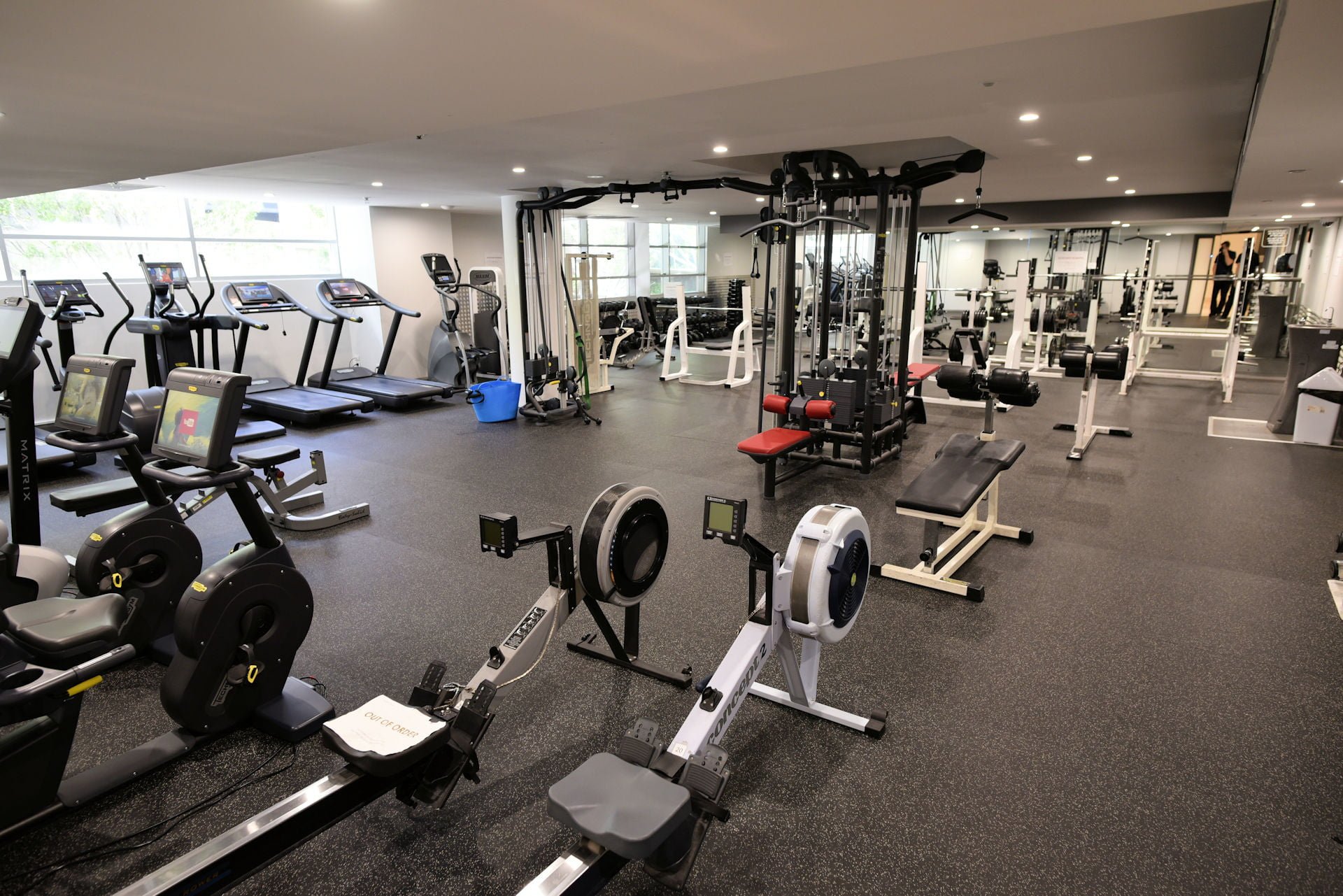
Next, we head to the gym, which is access controlled and incorporates CCTV, the cameras of which are monitored 24 x 7 at the security control room. We emerge into the lobby of the next residential tower where cameras are challenged by strong backlight in the mornings, then it’s back down into back of house, the narrow corridors ceiled with cable trays, network and service rooms to left and right, the cavernous carparks with variable lighting stretching as far as the eye can see.
“Despite appearances, the buildings are managed as a single precinct by a central management company, with the main rack of the security system located adjacent to the facilities management office,” Lyon explains as we wind our way along. “From the main rack there’s a link to the security control room, which is part of the office at the loading dock, where it can oversee the main entry ramp.
“The nature of management here had an impact on the design of the system – the security team doesn’t report to facilities management but works alongside them, both sides having visibility of the system and access to relevant pieces of functionality.”
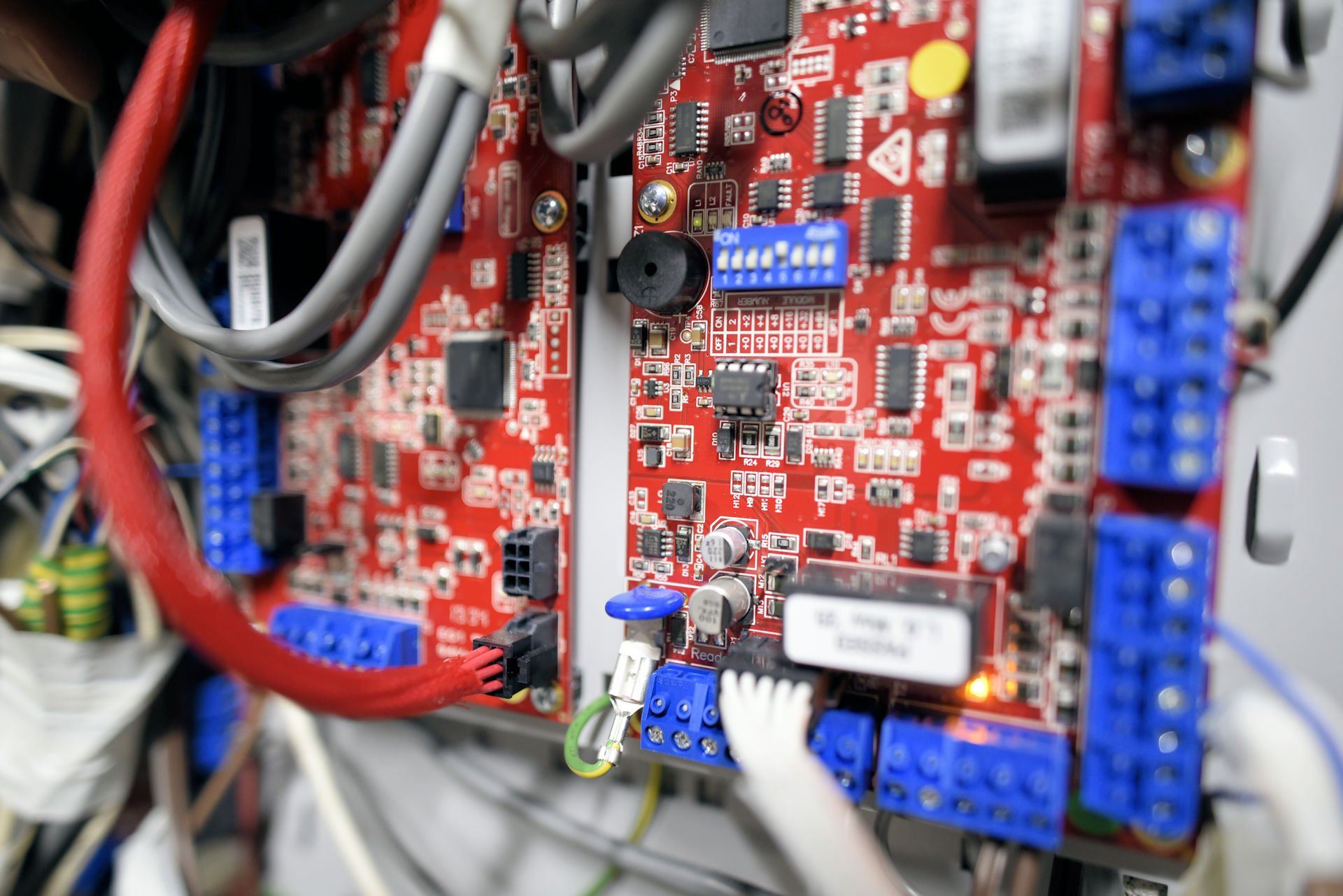
As this explanation progresses, we continue our journey in and out of network rooms, checking out CCTV cabinets and Inner Range Integriti control panels, Lyon pointing out salient features as we go, including cameras in the fire stairs which required drilling in from behind to cable patch panels. Throughout I notice the depth of the CCTV coverage – even the most challenging areas are well monitored. There are also multiple access points all managed by the upgraded system – in another network room Lyon shows me the existing wiring reconnected to new Integriti hardware.
We also visit the main rack handling the head end of the CCTV system. This foundational rack is thoughtfully configured and sweetly cabled – a beautiful piece of work. The use of fibre optic cable helps keep things organised by minimising the volumes of cable required to bring remote video feeds to node zero. Poking around the back I see the professional touches are not skin deep.
“Something special about the main rack was that it needed to be mobile so it could be moved around a little and that meant flexible conduit had to be incorporated to allow extra movement,” Lyon explains.
Micron Integrates Inner Range, Milestone, Avigilon – Security Office
At this point we arrive at the main security room adjacent to the loading dock and the main entry ramp down from the street. At the security workstation there are 3 22-inch Samsung monitors displaying live image streams while a 4th monitor supports the Integriti management system and is showing a detailed map view of the site called up in Gatekeeper. Depending on what’s happening on site, Integriti applications can be minimised, and Milestone XProtect VMS viewed on the monitor.
It’s impossible for me to walk into a control room in a challenging application like this one, with areas of very low light and areas of strong backlight, and not get fixated by the camera views. In short, image streams from the Avigilon H5 cameras are surprisingly good. We’ve never tested an Avigilon camera at SEN, and I walked into the security room with no preconceptions. The ability of the H5 cameras to iron out variable lighting is excellent and colour rendition is another strength. You’d expect cameras looking out from under a covered loading dock into sunlight to struggle with overexposure but the Avigilon H5 WDR does a nice job of handling it.
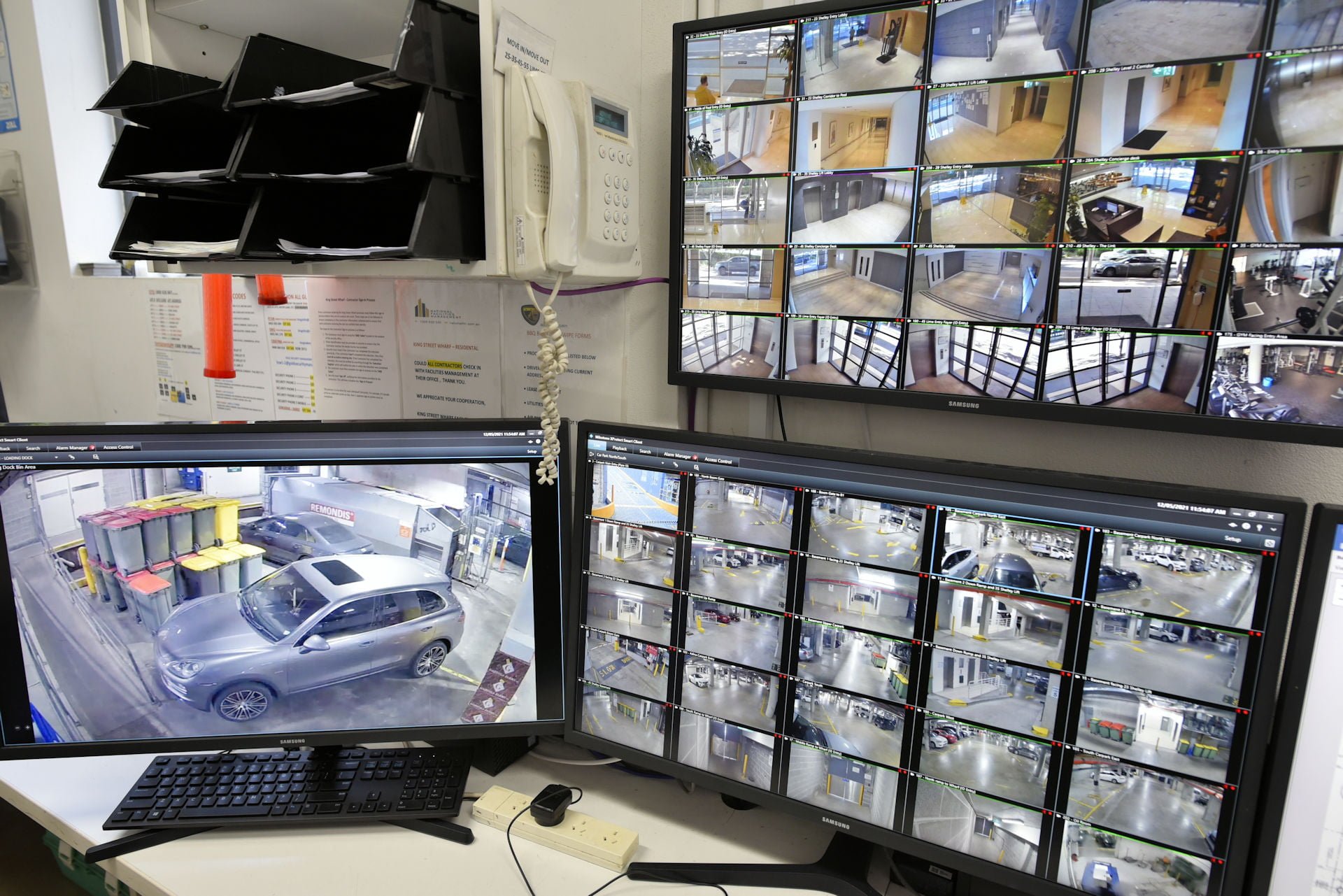
Viewing security monitors you see the sense in camera selections, wide angle cameras handling some of the sweeping views, while narrower angles of view perform well covering access points in the passageways, giving the best possible identification without covering too much wall. In the sprawling carpark these narrower angles of view translate into depth of field. In some applications I can’t help noticing the barrel distortion and widespread CAs coming from the compact domes but elsewhere the ability to view multiple entrances with one camera and the high quality of the WDR performance looking out of lobby windows into direct sunlight on the street renders such quirks trivialities. There’s minimal blooming, too, which can be a challenge in carparks.
The security operator on duty says compared to the old system the Avigilon/Milestone solution is excellent, with navigation being particularly easy. Something else he points out is that the old analogue system included camera views that were almost impossible to make out, while the new system delivers excellent colour images, even in low light areas. Viewing the video wall, I can see what he means.
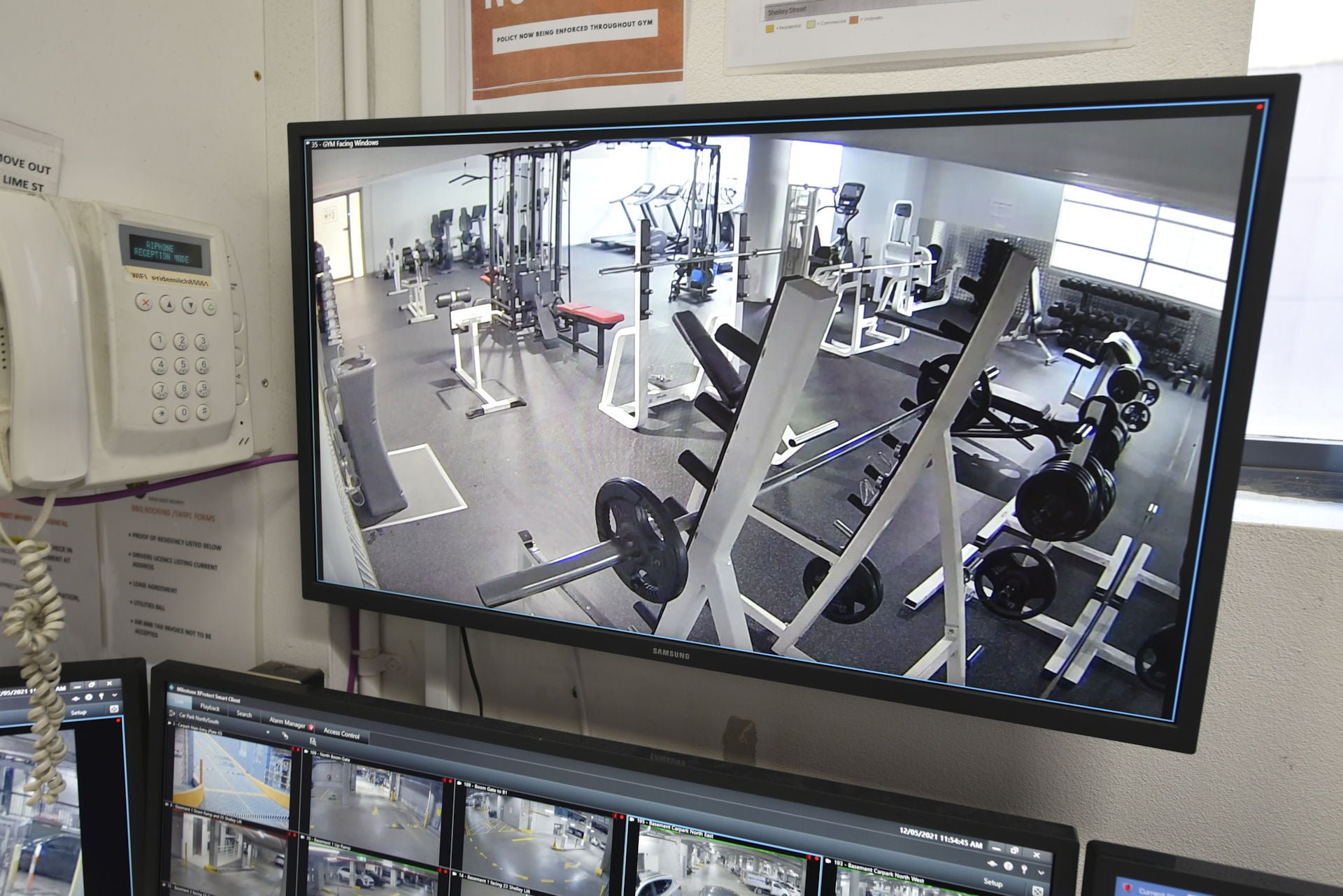
The operator also points out that recently there was an incident of bicycle theft and calls up the footage for us to see. When watching high resolution video streams from quality CCTV cameras it’s hard to believe people would be silly enough to behave the way our subjects do, peering through external doors in full view of cameras to check the coast is clear before loading a stolen bike into a car so they can add LPR to their court admissible faces. While the crime is minor, the performance of the system is not. This is an excellent investigation tool.
A key part of the security operation is managing access cards and there’s a dedicated Integriti ILAM with an integrated HID reader handling the commissioning task from the security desk. Leaving the security room, we head to the facilities management office, stopping off along the way to check out a new numberplate recognition camera installed in an old housing that snares LPR as vehicles come down the ramp from the street.
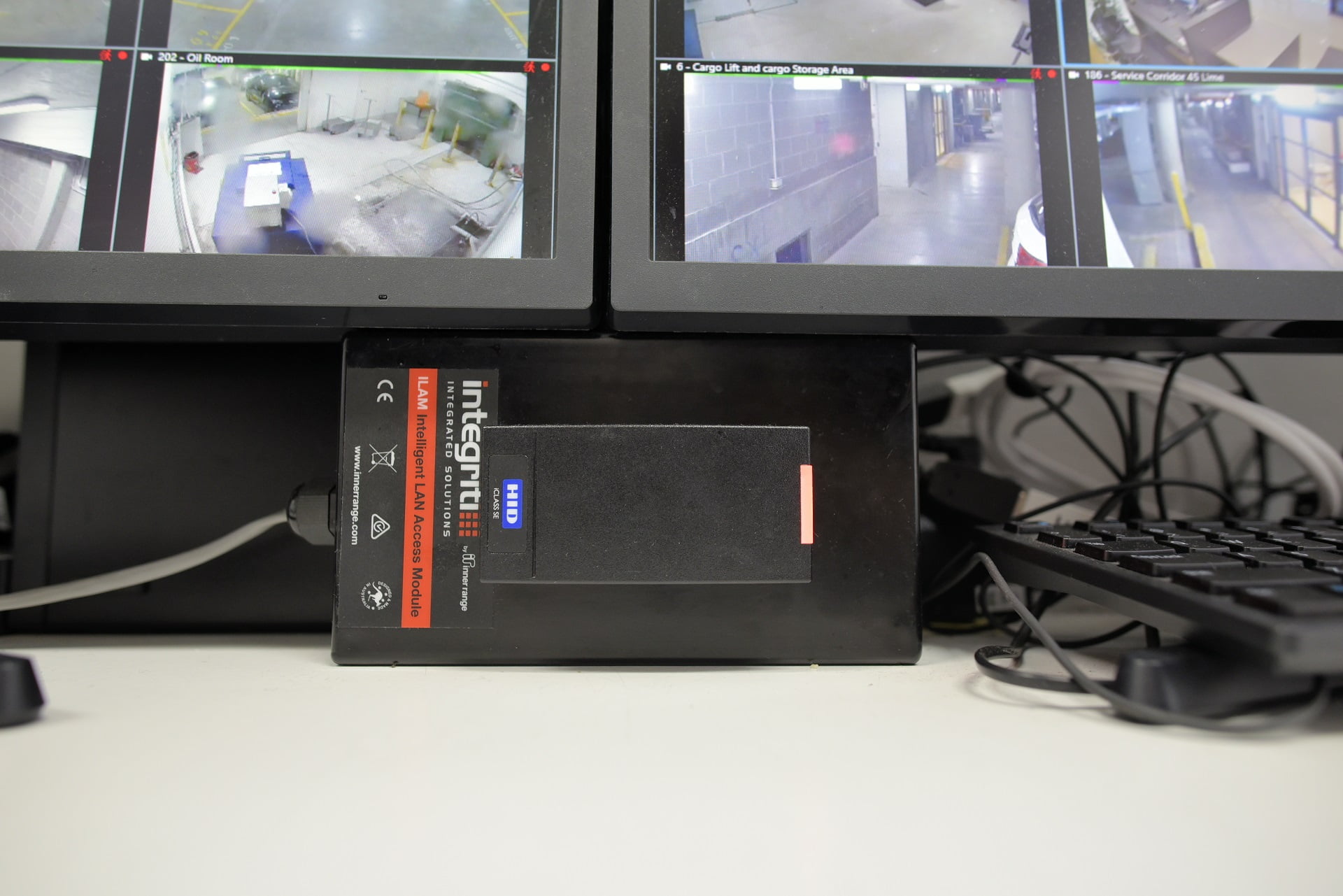
Facilities management runs from an open plan office with multiple workstations around the walls and at one end, that 55-inch Samsung wall-hung monitor we met earlier. A keyboard and mouse sit on the desk space underneath the monitor and are easily accessible to adjacent managers. Running on the monitor is a full instance of Milestone XProtect Smart Client, so there’s plenty of functionality to be had when the team needs situational awareness across any area of operations covered by the precinct’s comprehensive camera views. That could be a delivery, the state of works, or a security situation.
According to Andreas, from property management, the Milestone Smart Client is simple to use.
“It’s certainly valuable having the ability to see all the access events and to view cameras and to switch between cameras to follow events and view recordings,” he says.
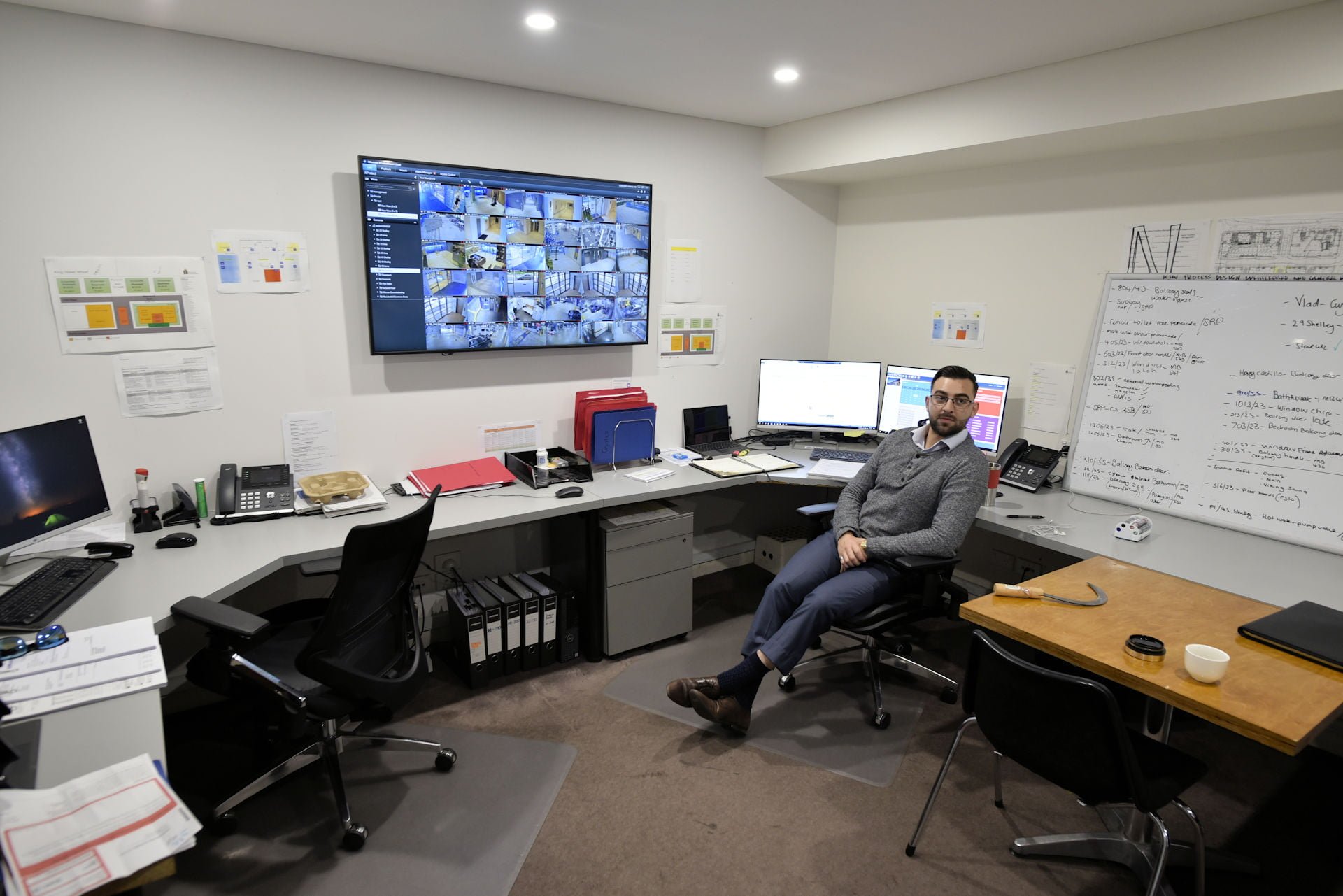
Beneficial for the facilities managers is that Smart Client allows customised templates to be set up which give them coverage of areas of particular interest that might assist with projects – for instance, every access point in every lobby around the site.
Micron Integrates Inner Range, Milestone, Avigilon – Installing The System
The physical installation was the biggest challenge of the KSW application and the complexity started before any hardware was hung on the wall. According to Lyon, because existing access control cabling was to be re-used, multiple techs needed to pull old devices and check cable runs to ensure their integrity, as well as verifying the accuracy of the original CAD system drawings supplied by the customer.
“Right at the start, the techs needed to work out which cables related to which devices in the field,” he explains. “That meant there was a lot of testing with techs identifying each door strike and reader and which door controller they were connected to. It was a labour-intensive process but once it was done, we were able to tag the cables and reuse the existing infrastructure for new devices. Given the size of the site, that meant a big saving for our customer.”
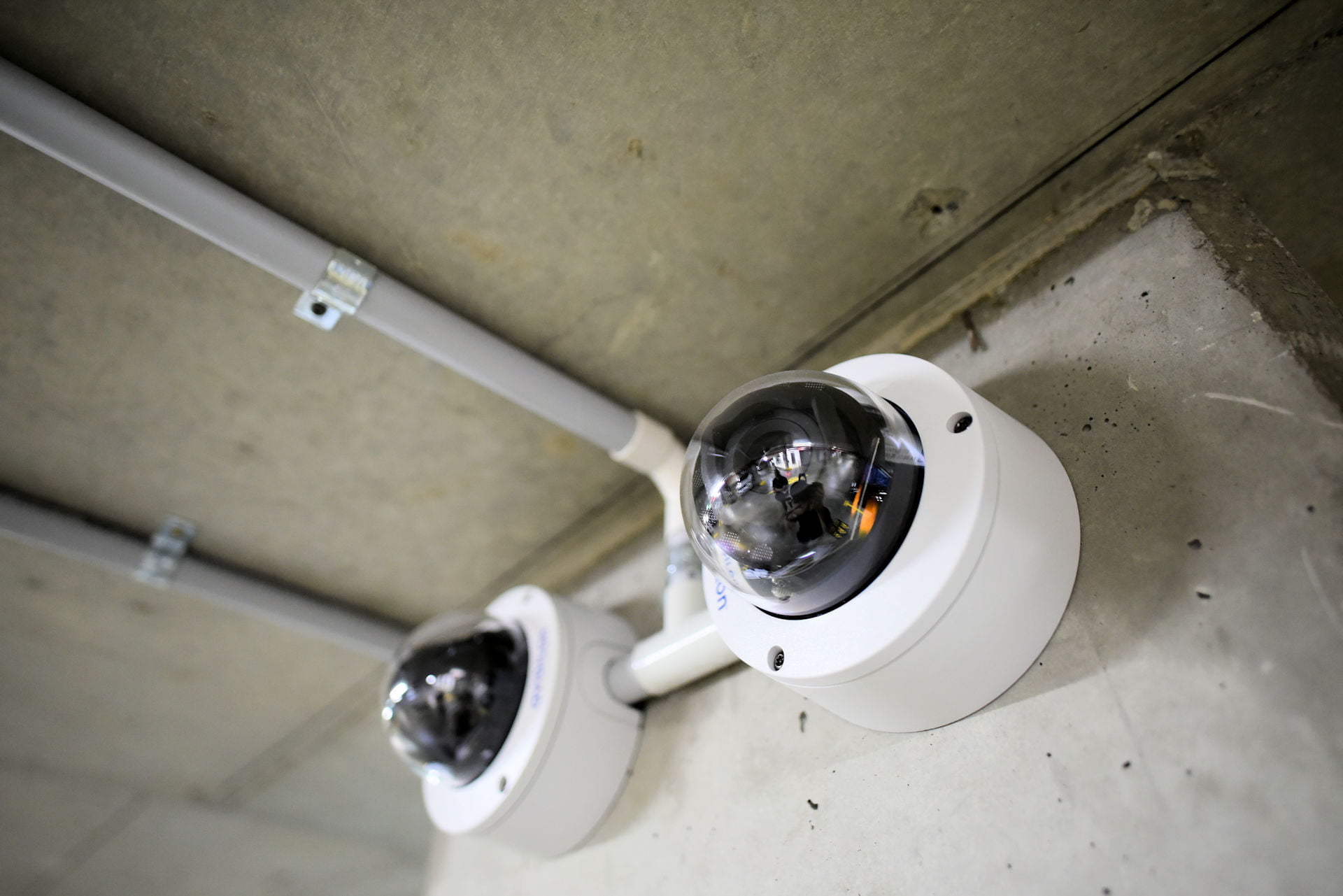
Once the testing was completed, the team got to work on the installation, with a team of 4 technicians handling everything from elevated ladder work to crowd control, to feeding cable for CCTV cameras.
“We did a lot of the work during normal hours – starting at 7am in the morning and finishing at 3.30 in the afternoon,” Lyon explains. “The customers were comfortable with the work and with our safety precautions. With COVID continuing, there’s really no time that people are not on site in a residential, due to the hybrid work model. From the perspective of security installations, it’s just a matter of being considerate and respectful of those stuck at home.
“When it came to the Integriti panels, as pointed out, we reused the existing cabling and simply put our new hardware in. We then added links between Integriti and the new CCTV system.”
While most the access control cable could be reused, when it came to installing the CCTV cameras things were very different. Original coaxial cable and analogue cameras had to be removed and new Cat-6 cable needed to be run to serve expanded camera coverage.”
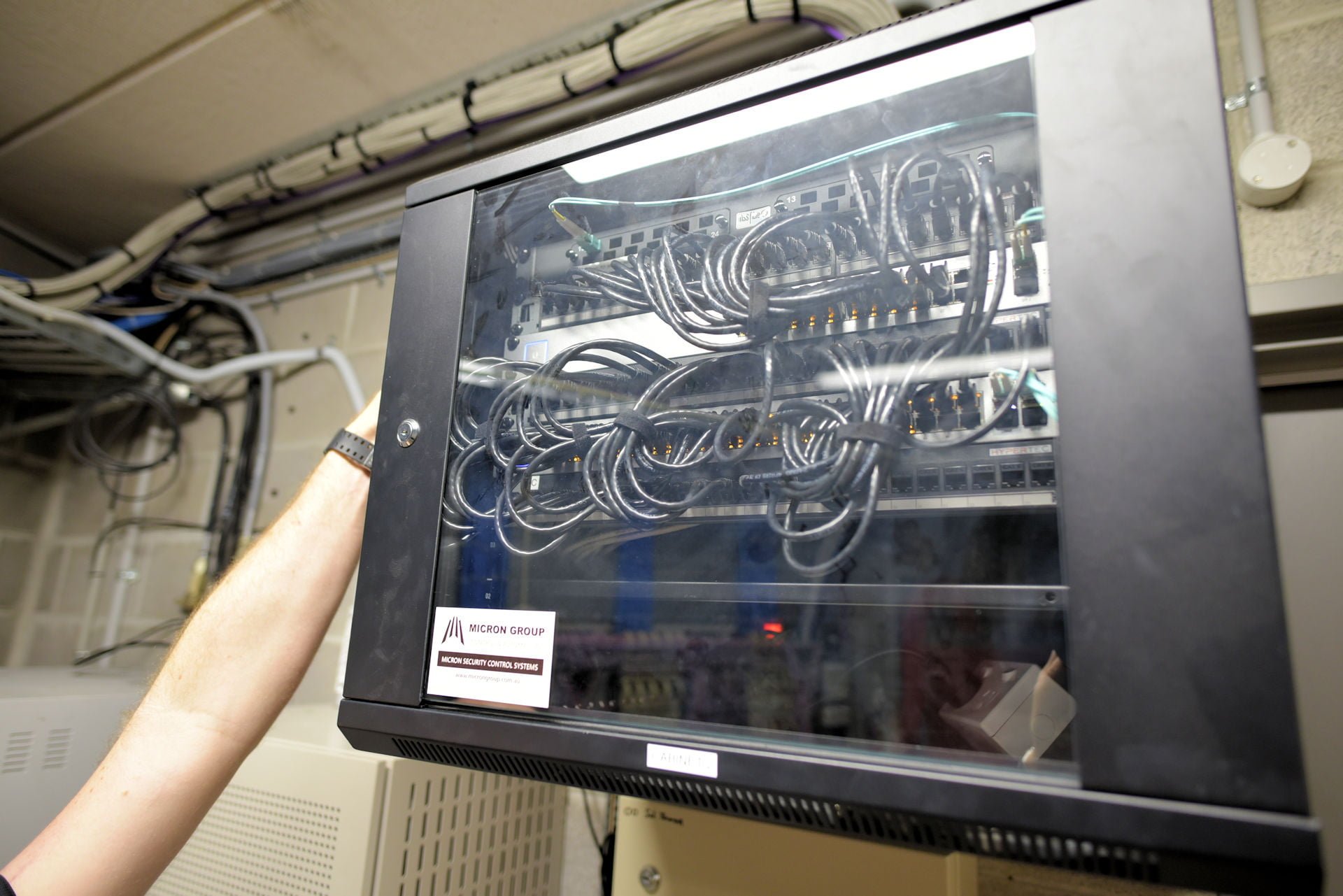
“When you look at the nature of this precinct you know it’s going to involve meandering, torturous cable runs,” Lyon says. “For instance, one of these buildings had a cable run that came out of the switch room and into a cable tray, then into a ceiling cavity above a big cool store for a restaurant. Within the cool store was a panel we needed to remove, and the cable then needed to be fed diagonally into a riser 3m away.
“There were a lot of challenges just getting cables where they needed to go. There were sections we needed to drill holes through to make penetrations into the back of fire panels in the main lift lobbies of some of the buildings. There were also lots of complex conduit runs, as well as some high-level integration work. The install definitely kept the team thinking.”
Despite the size and complexity of the site, work progressed at good speed.
“The project began on April 6 and was handed over at the beginning of August, so it took 5 months in total but of that, 2-3 months was spent on cabling core infrastructure. Once the cabling was in place, the team got stuck into the back-end stuff, including racks, switches, management and recording servers and UPS.”
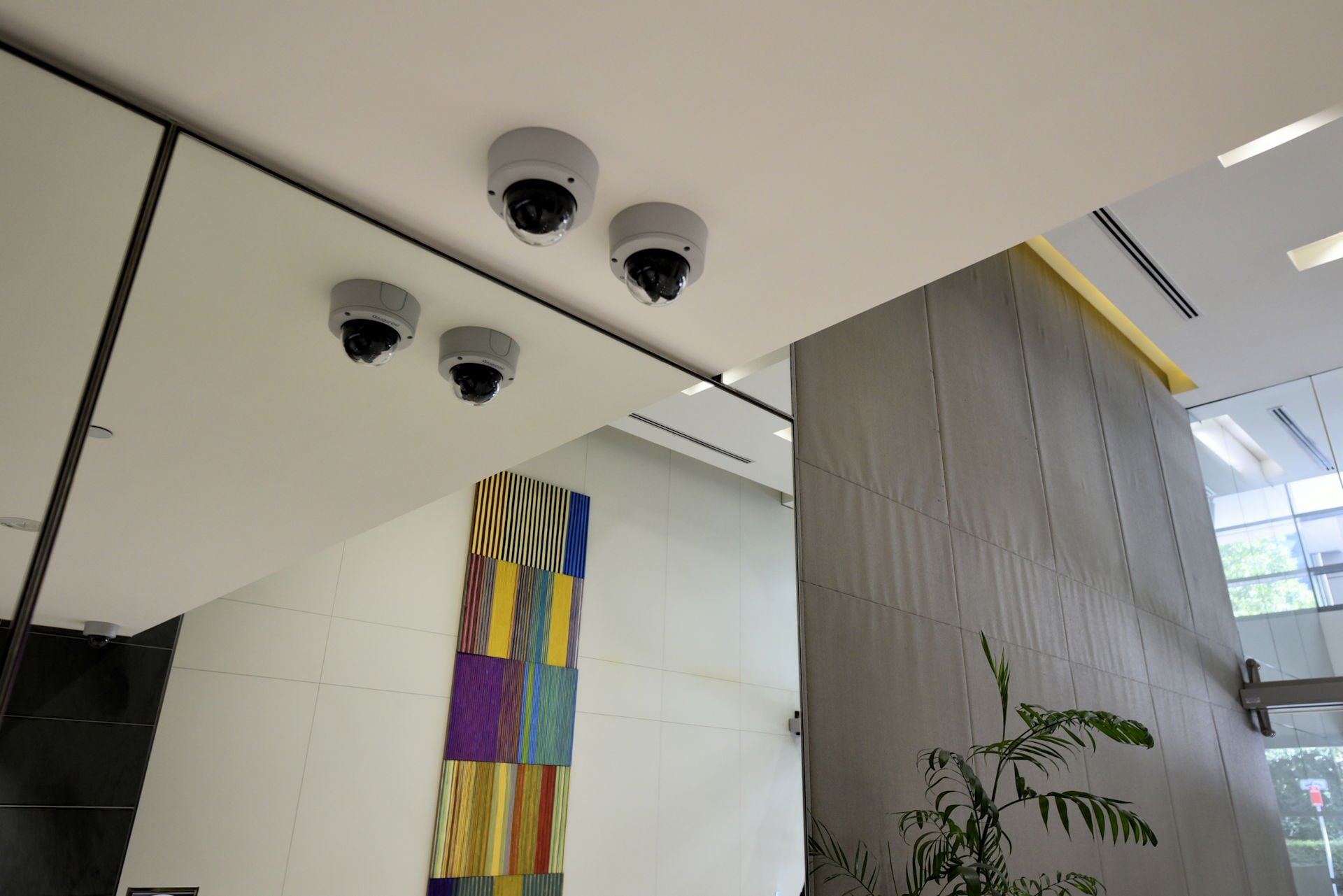
The cameras were installed after the cabling was completed and camera selection depended on application, with a single camera handling lobbies in the commercial buildings, while up to 4 cameras cover the residential lobbies, which have more design elements that intrude into angles of view. Importantly, the residential cameras are designed to offer overlapping fields of view.
“The CCTV installation was conducted on a camera-by-camera basis and when it was acceptable to decommission one, we would cut over to the new camera,” Lyon says. “Ultimately, we had the 2 CCTV systems running in parallel and the new Avigilon cameras were installed and recording when we finally removed the analogue cameras.
“We had some interesting challenges working through each building positioning cameras for best performance – some for close up facial identification and others zoomed in on entrances, some with wide angle views to give situational awareness. In some cases, to get those views we had to drill through from the other side of heavy reinforced concrete to provide a path for the cable to the camera. It’s just a complex environment.”
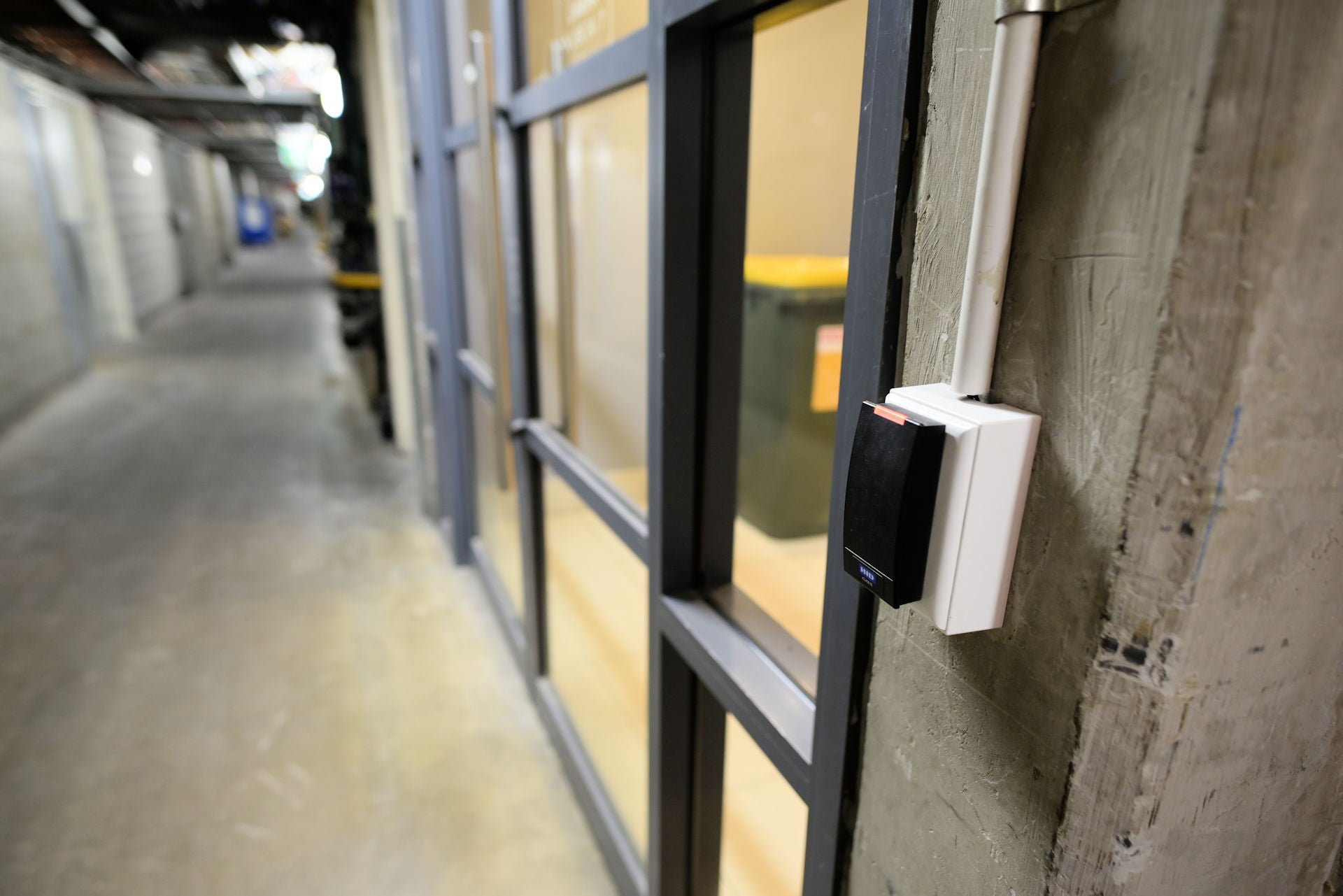
“The network rooms also needed to be carefully handled – having multiple switches and more than 200 cameras required careful cable management in the switch rooms. We also added additional cables between nodes, so we’d have redundancy. And there were physical stipulations for some elements of the installation to ensure the end result was as discrete as possible.
“At all times the built environment made things complicated – in a particular instance there’s a large concrete slab that steps down and gives you about 2 inches of space to get your conduit in and then you’ve got a sharp 90 degree corner to go down – from an installers point of view, that’s not where you want a cable run to be but you just have to find your way through as a team. We’re certainly very happy with the results.”
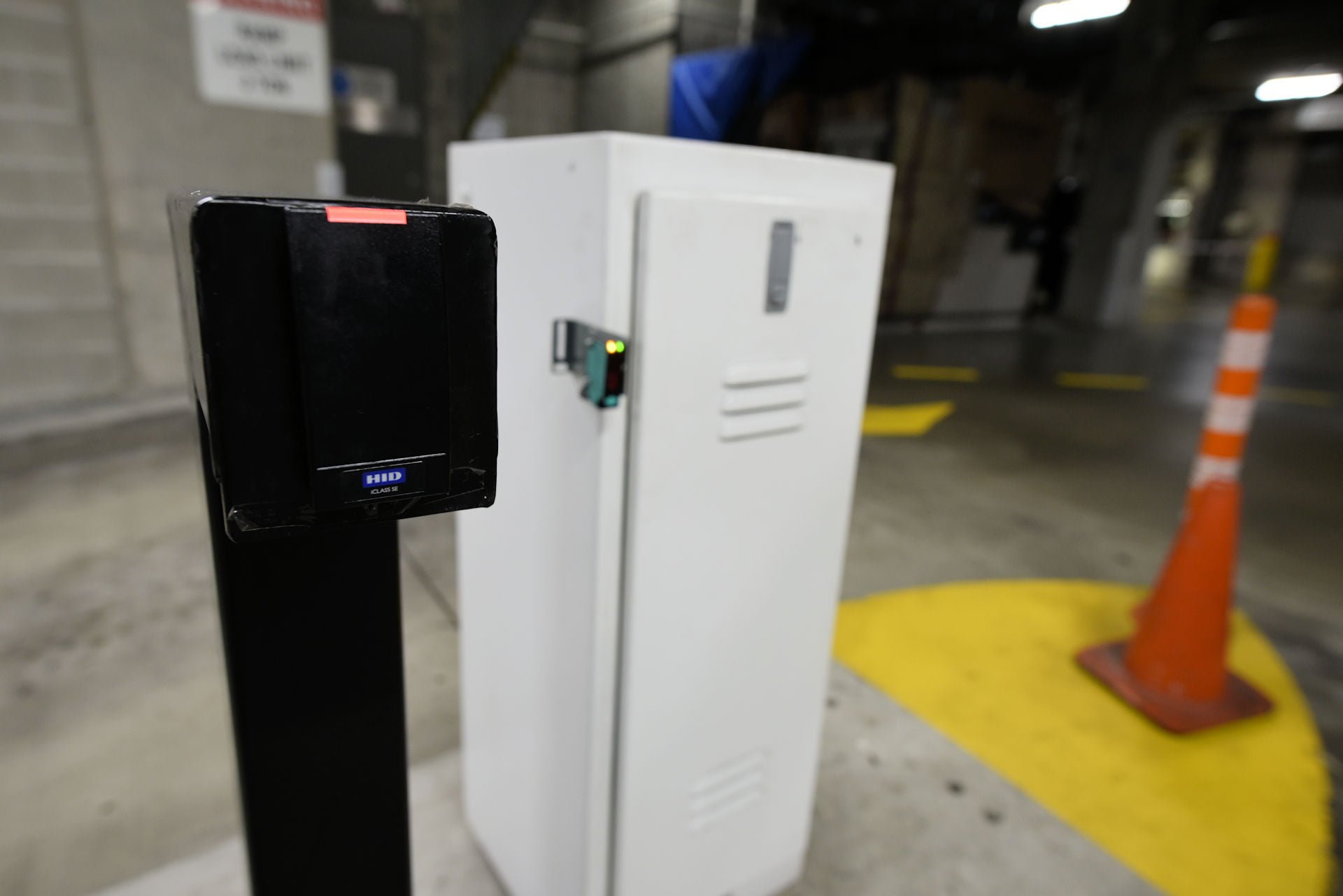
Once all the physical work was done, there was still plenty to get through in terms of configuration, programming and commissioning. This included setting up the workstations, adding smart mapping, integrating alarms, connecting the CCTV system with Integriti, setting up users, access and permissions, setting up the database, configuring recording scopes and archiving, setting up email servers and smart device apps, creating operating manuals for the systems and for this specific integration. There was also time required for training the security and facilities management teams.
Micron Integrates Inner Range, Milestone, Avigilon – Conclusion
Despite the physical challenges of the application, Lyon says the hardest thing about King Street Wharf was the process of satisfying stakeholders.
“In an application like this, with multiple vested interests, any changes to the scope of works needed to be signed off by everyone,” he explains. “If a camera needed to be relocated somewhere else to improve its angle of view, or if there were any revisions to the original plan requested by security or management, getting final authorisation was a process. Fortunately, we were able to stay 95 per cent to the plan as originally drafted, which was a good outcome for all concerned.”
Upon completion, the KSW solution was thoroughly checked over by security consultant, Paul Charles, who praised its workmanship.

“All nodes and the head end rack were inspected – all appeared clean and dust free and workmanship and cable management appear to be of a high standard,” Charles says. “Micron took the added step of installing an additional 10 gigabit Cat 6a cable to each of the nodes to act as a backup should the optical fibre cabling become unserviceable.”
The success of the King Street Wharf project is reflected in the fact that not only are the security and facilities management teams satisfied with the capabilities of their new system’s ability to streamline day-to-day operations, the site benefits from the added security and safety provided by an excellent integration that delivers high quality situational awareness and excellent footage of access events. The high quality of the products installed, the design of the system and quality of the installation makes Kings Street Wharf an exceptional security integration.
You can read more about Inner Range Integriti here or see more SEN news here.
Micron Integrates Inner Range, Milestone, Avigilon At King Street Wharf



